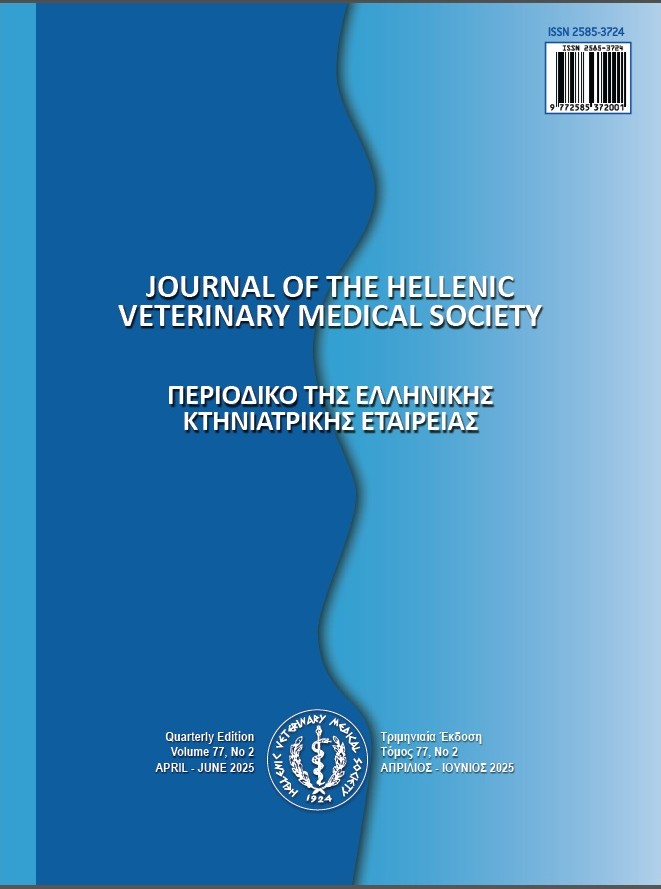Effects of ochratoxin on the performance, haematobiochemical profile, macroscopic and histopathological lesions in quails (Coturnix coturnix Japonica) Pathological effects of ochratoxin on the performance and haematobiochemical profile of quails (Coturnix coturnix Japonica)

Abstract
Mycotoxins are ubiquitous in the environment and occur naturally in human food and animal
feed. Therefore, in this study the performance, haematobiochemical profiles, macroscopic and histopathological le
sions in quails caused by ochratoxin (OTA) were examined. The OTA was obtained by culturing the spore of Asper
gillus ochraceus. Sixty healthy male quails were selected and distributed into 12 replicates (5 quails per replicate) in a
completely randomized block arrangement. Each experimental diet was assigned to 4 replicate groups. Quails in first
group were fed on standard basal diet (CP 27%) without the addition of OTA (OTA-0; negative control), while in other
groups OTA was incorporated in basal diet at 1 mg/kg (OTA-1) and 2 mg/kg (OTA-2) of basal diet, respectively.
The feeding trial continued for 21 days experimental period. Clinical signs observed in OTA-fed birds were diarrhea,
broken feathers, increased water intake, and depression. In addition, lower (p < 0.05) feed intake was reported in
OTA-fed quails. Likewise, weight gain was reduced (p < 0.05) in OTA-fed groups. Gross lesions of hypertrophy, hem
orrhages, paleness and friability were detected in the liver and kidney of OTA-treated birds. Microscopic examination
of kidney and liver showed degeneration and sloughing of tubular epithelium in the kidney, narrowing of the lumen of
kidney tubules, and hepatic fatty infiltration and necrosis of liver parenchyma. The serum Alanine transaminase, As
partate transaminase, urea, and creatinine levels of OTA-fed birds were higher (p < 0.05) than OTA-0. However, serum
total protein and albumin were lower (p < 0.05) in OTA-treated groups in a dose- dependent manner. Likely, red
blood cell count, packed cell volume, and hemoglobin concentration were lower (p < 0.05) in OTA-treated groups. The
results of this study indicate that OTA at ≥ 1 mg/kg feed is nephrotoxic and hepatotoxic, and cause hematobiochemical
disorder in quails, which adversely affect their growth performance and may eventually lead to economic losses.
Article Details
- How to Cite
-
Ahmad, F., Khan, H., Khan, K., Khan, F., Ahmad, N., Saeed, M., & Ayasan, T. (2023). Effects of ochratoxin on the performance, haematobiochemical profile, macroscopic and histopathological lesions in quails (Coturnix coturnix Japonica): Pathological effects of ochratoxin on the performance and haematobiochemical profile of quails (Coturnix coturnix Japonica). Journal of the Hellenic Veterinary Medical Society, 74(3), 5953–5960. https://doi.org/10.12681/jhvms.30561
- Issue
- Vol. 74 No. 3 (2023)
- Section
- Research Articles

This work is licensed under a Creative Commons Attribution-NonCommercial 4.0 International License.
Authors who publish with this journal agree to the following terms:
· Authors retain copyright and grant the journal right of first publication with the work simultaneously licensed under a Creative Commons Attribution Non-Commercial License that allows others to share the work with an acknowledgement of the work's authorship and initial publication in this journal.
· Authors are able to enter into separate, additional contractual arrangements for the non-exclusive distribution of the journal's published version of the work (e.g. post it to an institutional repository or publish it in a book), with an acknowledgement of its initial publication in this journal.
· Authors are permitted and encouraged to post their work online (preferably in institutional repositories or on their website) prior to and during the submission process, as it can lead to productive exchanges, as well as earlier and greater citation of published work.









